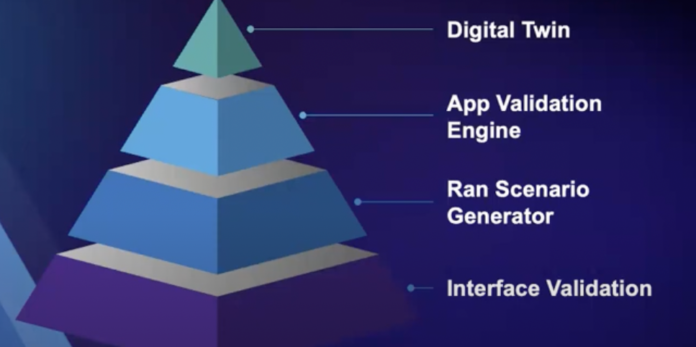Viavi on the role of artificial intelligence and digital twins in continuous testing of cloud-native networks
The big idea of 5G is delivering on-demand enterprise services that are automatically provisioned across network domains and tailored to best serve the end user while optimizing the network operator’s resources. While that’s a future state the industry is collectively working toward, it’s not a reality today. However, ahead of this major monetization opportunity, operators need a new, more real way of understanding network performance in order to fully leverage the speed and agility of the networks being built; the answer, according to Viavi CTO Sameh Yamany, is to use real world network data to build a digital twin of the network, then train artificial intelligence to conduct continuous testing.
Yamany sees an important role for digital twins, continuously fed with real-world network data, and AI engines in this new test, measurement and service assurance paradigm. He acknowledged operators have long used emulation tools loaded with synthetic data to hit network KPIs and adhere to service level agreements, but highlighted that synthetic data has led to disconnects between what was observed in the lab and what’s happening in the field.
Going forward, he said, “You really need to bring in the expertise from the field. You really need to train a model of the digital twin with this data so it can actually understand what realistic use cases you’ll have…You have to have this continuous feedback loop from real to lab to live, and back again.”
At a high-level, this would involve interface validation so disaggregated radio systems can “talk” to one another, followed by RAN scenario generation that would train and challenge your data model, then an app validation engine would measure and benchmark machine-generated intelligence, all resulting in a digital twin that joins realism with intelligence.
If operators pursue this approach to continuous testing, Yamany emphasized the need to tie network and application performance to operational cost, customer satisfaction, ARPU, customer loyalty/retention, and return on capital investment.
Yamany contrasted the digital twin approach with the currently predominant “swivel chair approach” to monitor different network domains in silos then stitching together an end-to-end view of the network.
“You have to build this end-to-end workflow,” he said. “You need to be able to understand your inventory, the topology of an automated network…Data analytics becomes an integral part of designing the network, of orchestrating the network. You need to be able to test in real time. You really need to be able to monitor in real time, create KPIS, and also use artificial intelligence/machine learning to understand the anomalies, the behaviors. The complexity is not going to allow you to go in and do this manually.”

